crack garden
Experts say that directing your gaze towards natural elements, even in the middle of a city, can enhance well-being. I find this to be 100% accurate.
Admission to the urban museum of “crack gardens” is free!
All you need are some comfy walking shoes and the desire to explore. Urban settings are common habitats for these miniature gardens because concrete is plentiful. However, green life forcing through cracks is not limited to cities. It can be lush and surprising in all kinds of places. I focus most of my attention on what I find in the urban setting because discovery can bring immense pleasure due to the stark contrast between manmade and natural environments.
Crack gardens do not require tending like other gardens. They volunteer their existence by courageously pushing through the cracks while relying on occasional sunlight and rain for sustenance. It’s important to mention that the crevices can also collect leaves and petals, resulting in wonderful patterns and tiny landscapes.
My initial attention to these little wonders was sparked by countless hours of hitting the pavement during the lockdown phase of the pandemic, and I’m still happily wandering to this day.
Scroll down to visit the gardens and read more. . .
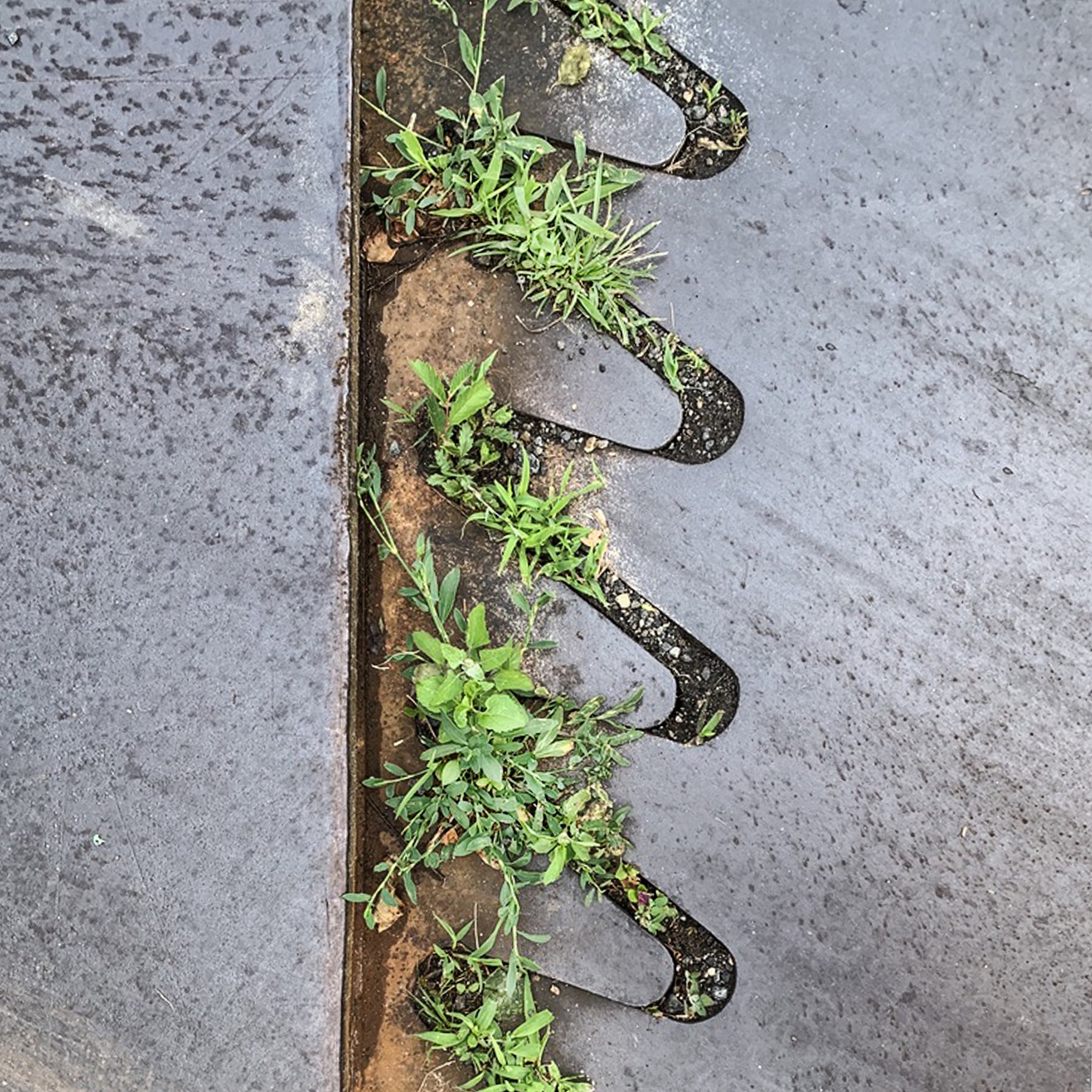
air vent on the Spring Garden St. bridge

ground light at the top of the rocky steps

exquisite hedge with afternoon shadows

like a modern art installation

pink petal magic

rubber curve with green moss accents

hello world plant explosion
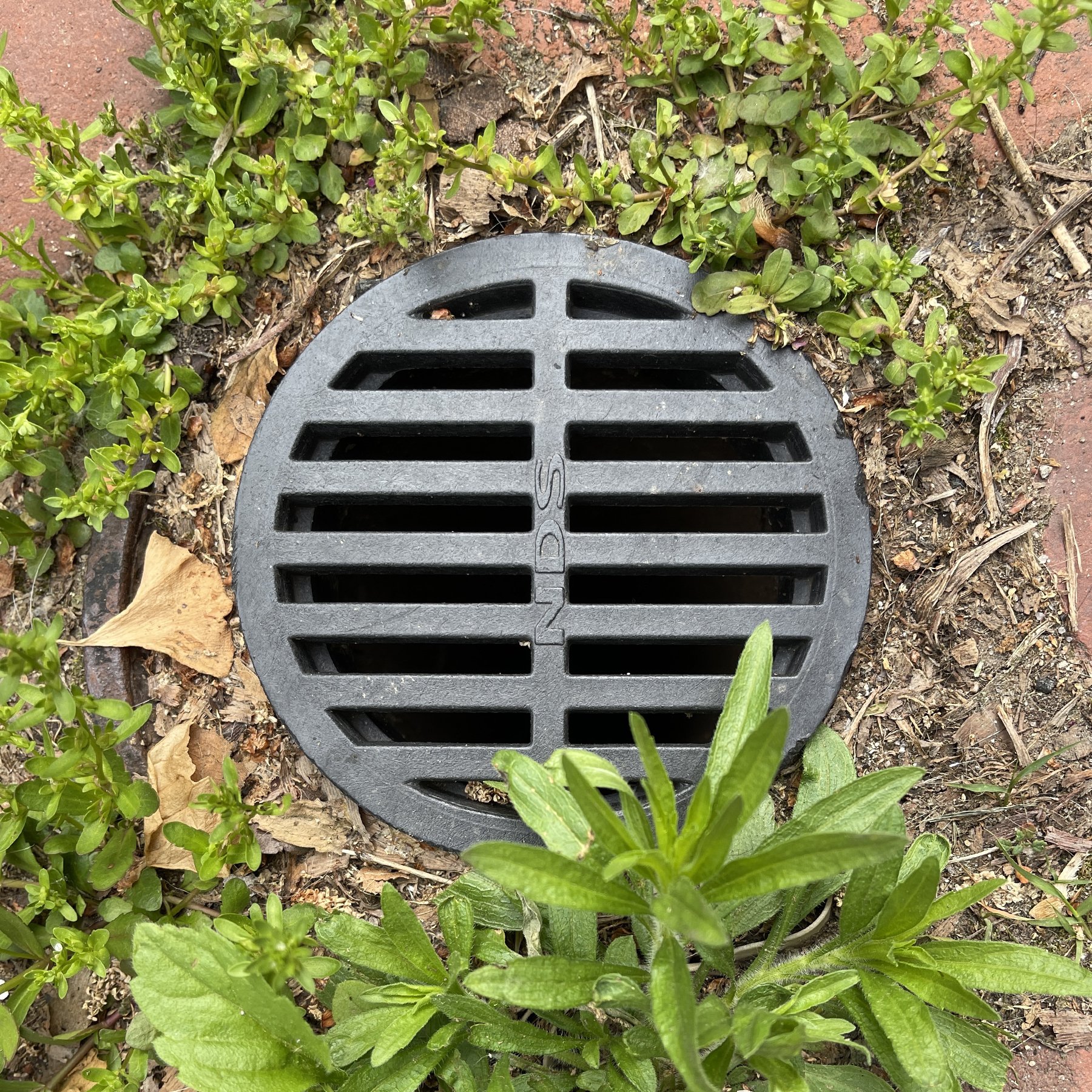
lush edging around the sidewalk vent

love of stone with sprouting grass
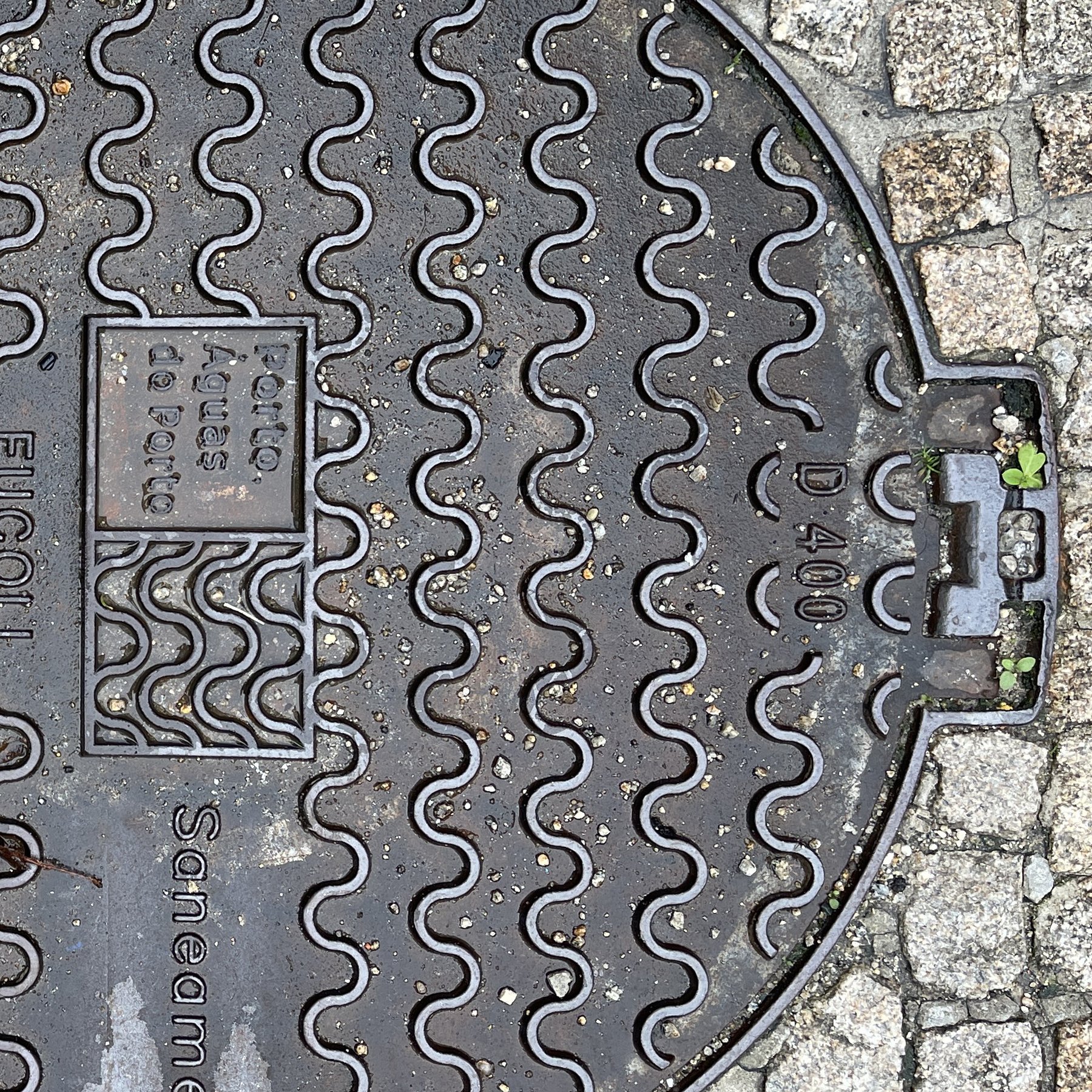
European sidewalk with stylish metal cover and teensy green volunteers

border garden

perfect petal art

pollen at its best
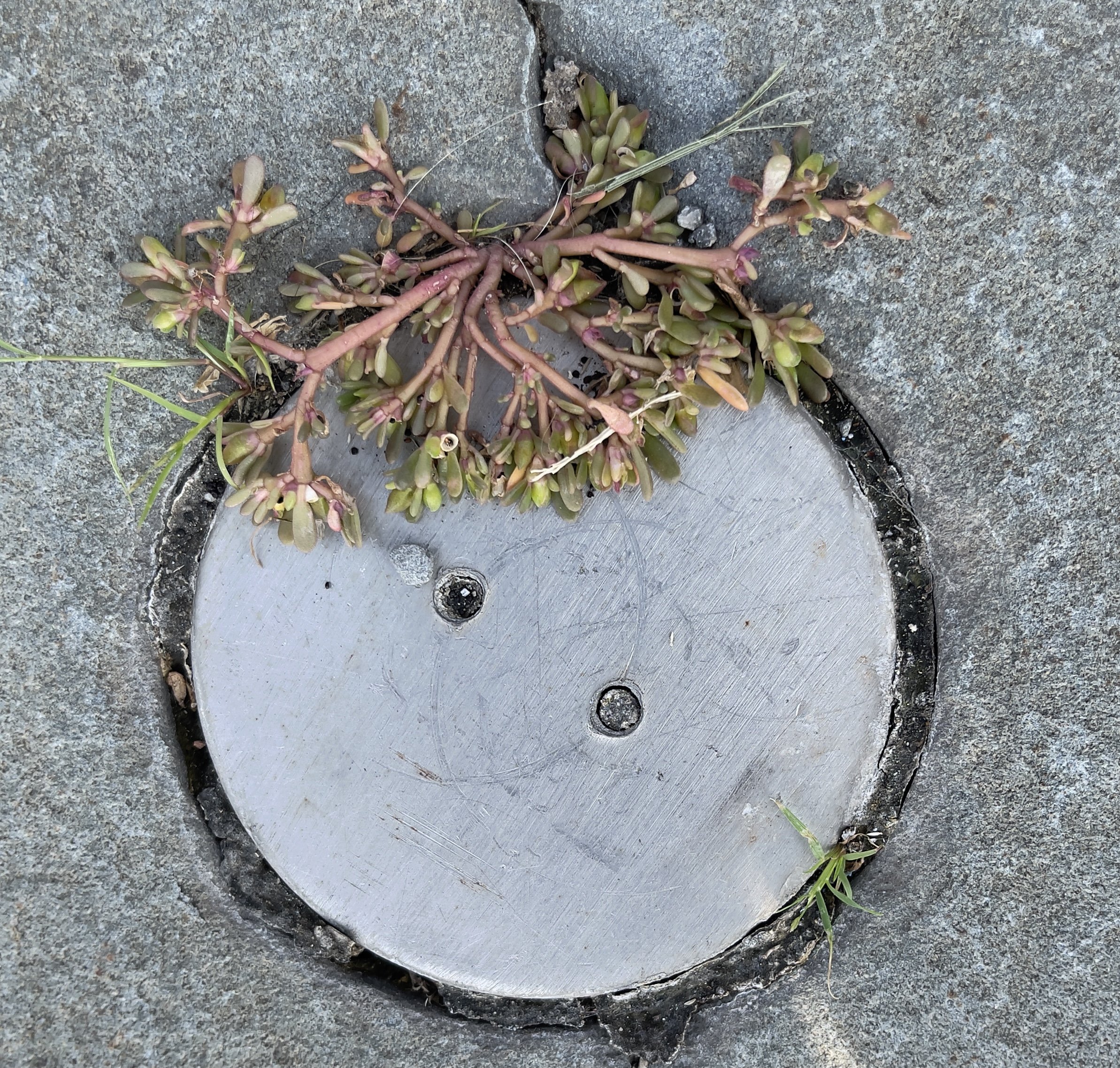
who is she with that hairdo?
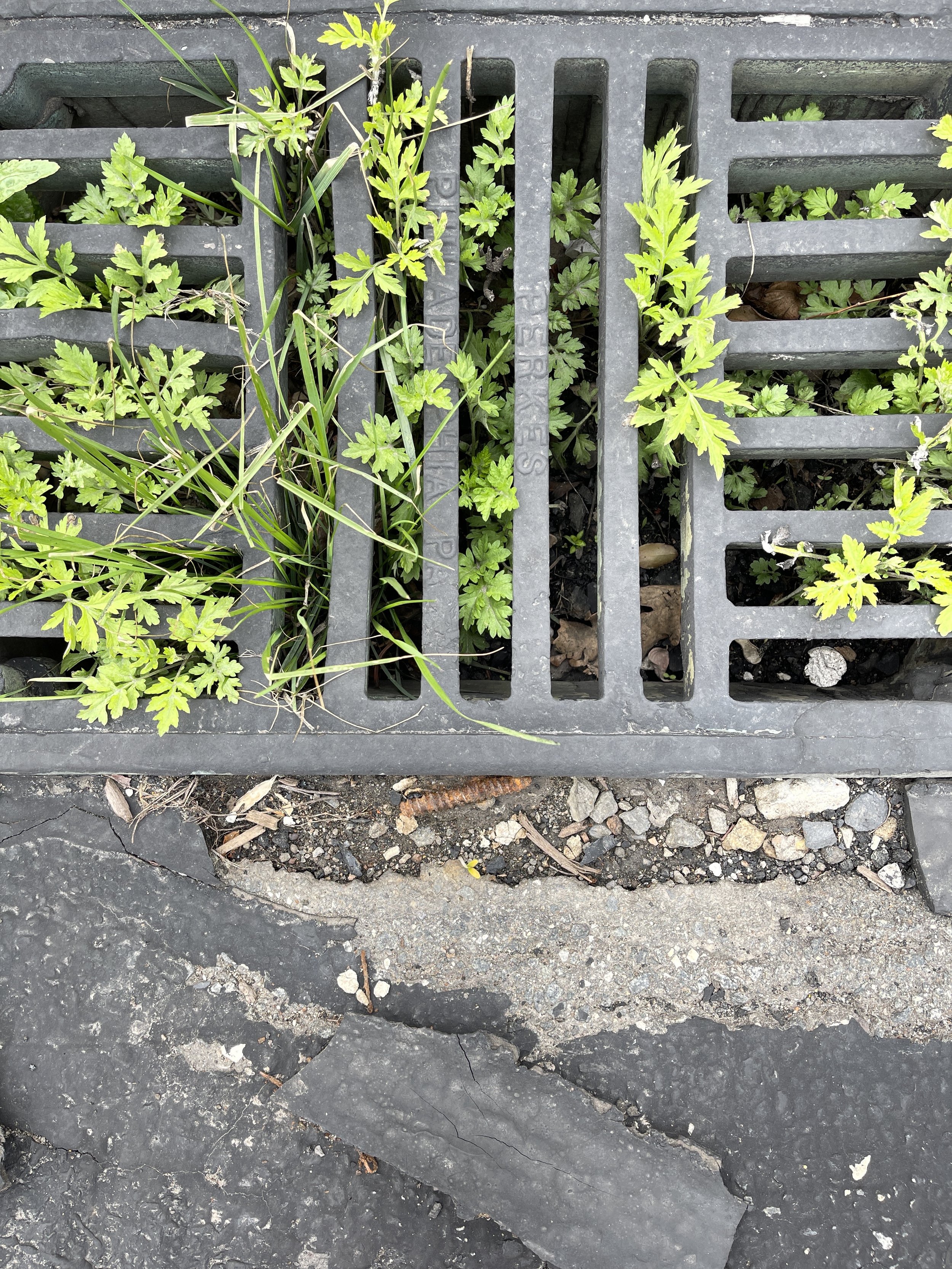
unexpected beauty is always welcome

such a cutie-pie
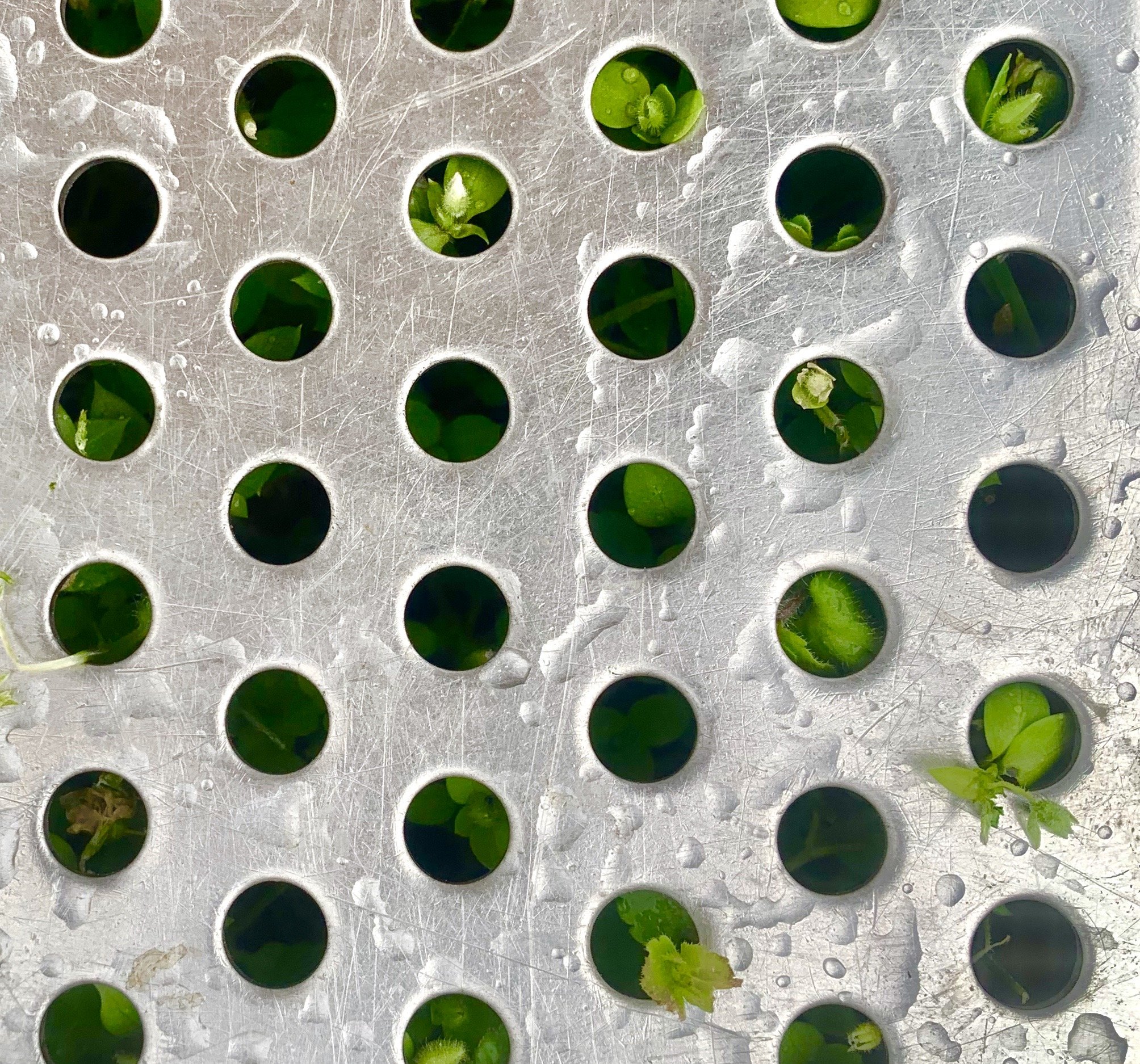
all the right elements

four inches of wonder
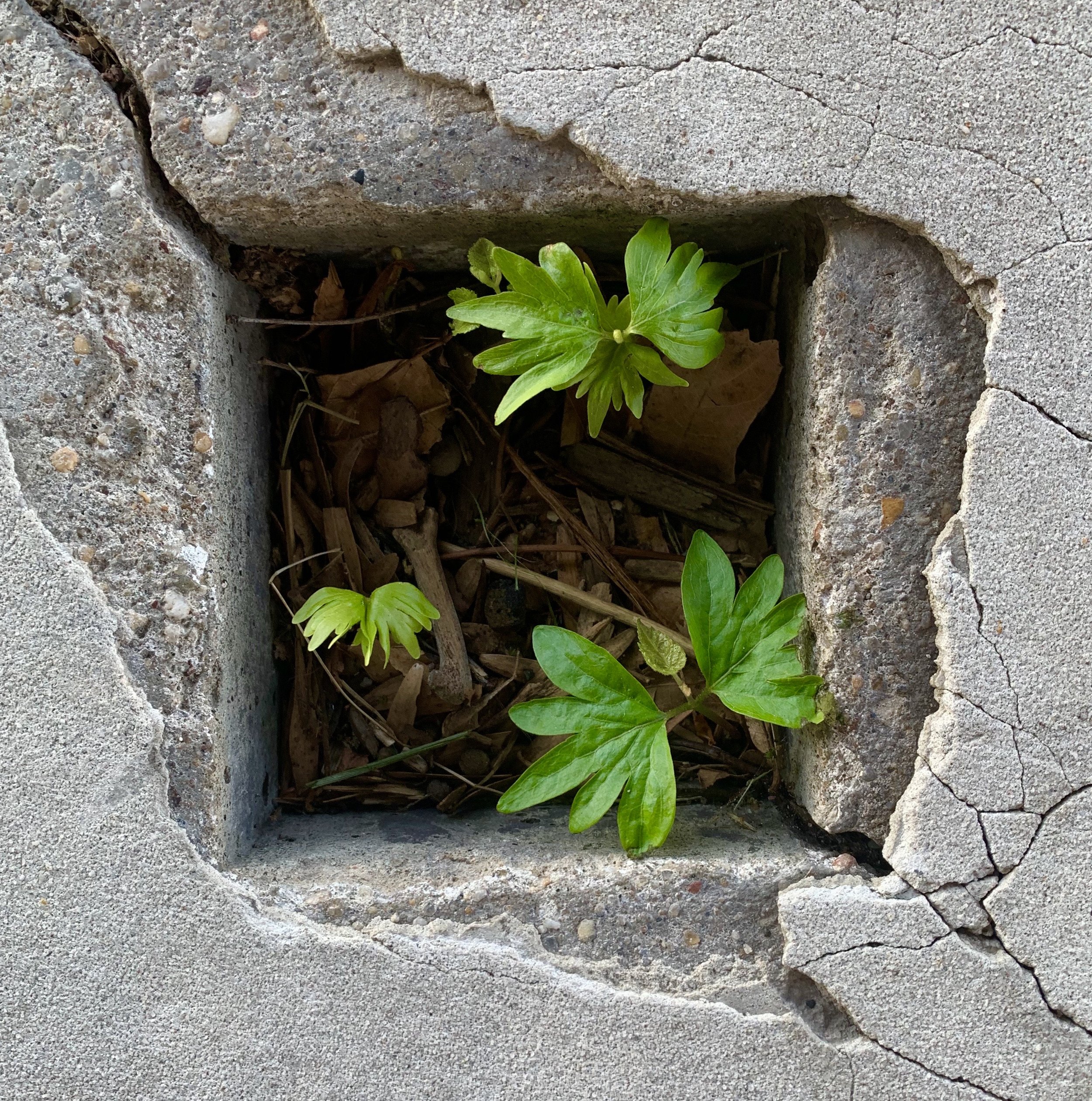
how can you not marvel at this gesture?

stretching the definition of crack garden

when it's good, it's good
design and the crack garden
Every time designers set out to make anything, they must make decisions about scale, proportion, positive and negative spaces. This requires careful analysis of how one thing relates to another thing. I apply this same analysis to everything I see.
My process: walking, seeing, capturing, designing, repeating.
Result: images that mimic the experience of forming a collectively intriguing pattern from a distance and charming crack gardens when viewed up close.
Crack gardens form when plants burst through splits in cement, asphalt, tar, wood, stone, and brick. I seek and capture these mundane treasures on my daily walks, then post my findings on Instagram as part of my real-time portfolio. I aim to raise awareness so others can notice and enjoy the small things.

